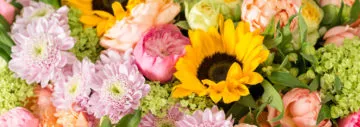Due to their beauty, mood-boosting, and air-purifying qualities, houseplants have become very popular. If you’re new to having them, though, then it’s important to make sure you place your plant in an area where it can get plenty of light. Remember, though, what seems like a well-lit room to you may still not have adequate amounts of light reach your plant to ensure it grows like it should. If your plant is exhibiting any of the below marks of insufficient lighting, then read on for more helpful hints and tips to ensure your plants flourish and thrive so you can enjoy their benefits. When you’re finished, peruse Walter Knoll Florist, St. Louis’ best florist’s plant catalog for more beautiful plants to bring into your home.
Evidence of Not Enough Light on Your Plants
Leggy
Light is food for plants so when they don’t get enough their stems become skinny and sparse, creating a leggy-looking plant. Another sign of a leggy plant are wide between each leaf. The space between leaves is known as the internode and large internodes are clear signs the plant needs more light.

Small Leaves
If the new leaves your plant is growing seem smaller than they should be, then the plant is likely not receiving adequate light. Just compare the new growth to the old growth to see if there is a marked difference in size. Normal-sized leaf growth should return once the plant is receiving enough light.
Leaning
When a plant needs to twist and turn itself to face a light source because it’s not getting enough, you’ll see it in its shape. If one side is leaning much more than the other side, then there’s a lighting problem. Move the plant closer or to a more well-lit area and make sure to turn it once a week to ensure all the leaves get adequate sun.

Abnormal Leaf Color
Pale yellow leaves or variegated leaves that have lost their colors are signs of light deficiency. The green color of the leaves is what helps a plant absorb light and create photosynthesis. When photosynthesis can’t work properly because of too little light, the leaves will become pale green, yellow, and then fall off.
Slowed Growth or No Growth
If the growth of your plant seems stunted, then you may want to move it to a sunnier spot. Light is the lifeforce of plants and is what gives plants the energy to grow and thrive. If there’s no new growth or noticeably slowed growth, then there is a light problem.
Getting the Light Right

Seeing some of the above signs in your plant doesn’t necessarily mean the solution is as simple as moving it closer to a window. Sometimes, doing so will result in your plant getting too much light. The area around a window that gets direct sunlight is really warm and may be too much for your plant to handle. Only sun-loving plants like cacti, palms, and succulents should be in direct light for most of the day.
For most other plants, medium to indirect bright light is best. This consists of a room that gets light for most of the day but it’s not direct light meaning there is a sheer curtain, or a bit of shade, a dappling effect coming in the window, etc. If you have a plant in a room like this but still exhibits some of the above signs, then moving it closer to the window is a good solution.
It takes a little trial and error to get the lighting just right, but know that your plant will let you know if it’s happy and healthy or not.


